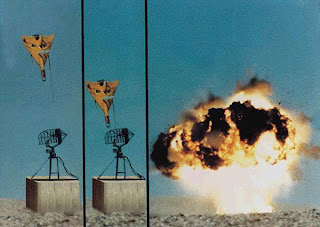indian_sukhoi
New Member
- Joined
- Apr 6, 2009
- Messages
- 957
- Likes
- 230
Copy pasting some reliable info about Harpy Drones
Best way to destroy a Radar!!,...........Saves the aircraft and the pilot from unnecessary risk.
http://defenceforumindia.com/milita...ing-integrated-air-defences-israeli-syle.htmlDestroying Integrated Air Defences!!
operational deployment :
the first fighter lunches 2 Samson drones
the drone has 200 km range so it's lunched from a safe distance .
the drone is built to create the radar signature of a jet fighter.
enemy radars light up like a pinball machine
each drone has a rad sensor ,thru triangulation type and approx distance of enemy radar is found .
strategic radars are annihilated by harop which cannot be spotted by radar
follow up attacks are made by the second plane against tactical ads supplemented by more harop attacks
Best way to destroy a Radar!!,...........Saves the aircraft and the pilot from unnecessary risk.
Last edited:


